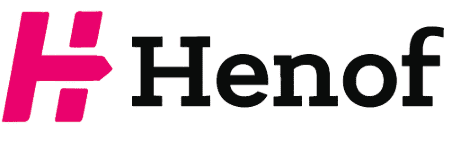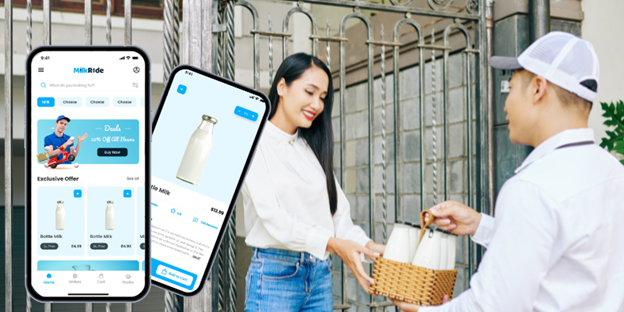In today’s fast-paced society, convenience is key. The need for on-demand services has increased, and milk delivery app are gaining popularity. As customers desire more convenient shopping experiences, the milk delivery app business is developing to accommodate their demands. This essay looks at how milk delivery applications may improve the customer experience and influence the future of dairy distribution.
Table of Contents
The Rise of Milk Delivery Apps
Now there are apps that bring milk, so you don’t have to go food shopping every day. In the past, getting milk meant going to the store, which can be difficult and take a lot of time. People can now buy milk and other dairy goods from the comfort of their own homes thanks to the rise of online shopping. As the idea of an East and Southeast Asian community app grows, these apps make sure that customers get the goods they love and trust by catering to their culture tastes and food needs.
User-Friendly Features
To make the customer experience better, milk delivery apps should focus on making features that are easy to use. It’s important that the user interface (UI) works well; users should be able to easily move around in the app. It’s a lot easier to use when there are features like easy reordering options that let users quickly buy their best items with just a few taps.
Customers can also choose their chosen shipping plan and amounts when membership models are flexible. For instance, customers can pick to have milk delivered once a week, twice a week, or once a month, depending on their needs. This level of customization makes customers more loyal and makes sure they always get fresh milk without having to remember to place another order.
Technological Innovations
Technological improvements play a major part in improving the customer experience in milk delivery app development. Real-time tracking is one of the most sought-after benefits. Consumers enjoy being able to watch their order from the moment it leaves the building until it comes at their home. This openness builds trust and helps customers to plan their day better.
Artificial intelligence (AI) also has an important part in demand predictions. By studying user activity and buying habits, milk delivery apps can guess when a customer is likely to run out of milk and prompt them to reorder. This proactive method not only ensures that customers never run out of important goods but also improves speed for transport services.
Moreover, adding multiple payment methods improves the user experience. Whether it’s credit/debit cards, digital wallets, or cash on delivery, giving consumers with diverse payment methods fits their interests and boosts transaction security.
Emphasizing Sustainability
Sustainability has become a major worry for customers, especially in the East & Southeast Asian economies. Milk delivery apps can improve customer experience by stressing eco-friendly practices. Implementing reuse packing, working with local dairy farms to reduce carbon loads, and promoting sustainable sources can connect with environmentally aware customers.
Furthermore, milk delivery apps can teach users about the sustainable efforts they are making. Sharing stories about local farms or the environmental benefits of using reused containers can build a stronger link between customers and the brands they support.
Customer Engagement and Feedback
Engaging with customers is important for any business, and milk delivery app development services are no exception. Regularly asking comments allows app writers to understand user tastes and pain points better. Implementing a customer feedback system within the app encourages users to share their ideas and experiences, creating a feeling of community.
Additionally, successful customer service can greatly improve the buyer experience. Offering 24/7 help through apps or live workers guarantees that customers receive quick assistance. Addressing customer issues quickly can lead to higher happiness rates and foster trust.
Personalized Marketing Strategies
Personalized marketing is another effective way to improve the customer experience in milk delivery apps. Utilizing customer data to tailor marketing messages and promotions can lead to higher response rates. For instance, if a customer frequently buys almond milk, the app can send targeted ads for related goods or additional items, such as cookies or cereal.
Loyalty programs that reward frequent purchases can also encourage customers to continue using the app. By giving discounts, exclusive access to new goods, or special deals for loyal customers, milk delivery apps can promote long-term ties with their user base.
The Road Ahead: Community and Connection
As milk delivery apps continue to grow, the focus should not only be on ease but also on building neighborhood relationships. Incorporating tools that connect users with local dairy farmers and makers can improve the overall experience. This method not only helps local businesses but also allows customers to feel more linked to the goods they purchase.
Furthermore, community-driven features, such as user boards or recipe-sharing areas, can build a sense of belonging among app users. This change from merely a business relationship to a community-focused platform can separate milk delivery apps in a competitive market.
Conclusion
The future of milk delivery app development comes in their ability to improve the customer experience. By valuing user-friendly features, accepting technological innovations, stressing sustainability, and encouraging community ties, these apps can change the way customers buy milk and dairy products. As the demand for ease and quality continues to grow, milk delivery apps that focus on customer needs will thrive in this competitive market.
By understanding and changing to the developing habits of consumers, milk delivery apps can ensure they stay important and useful in the lives of their users.

